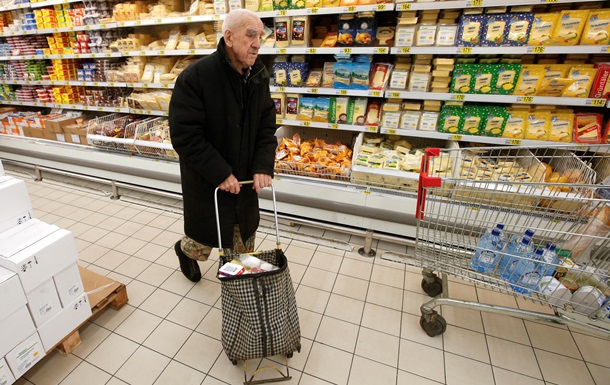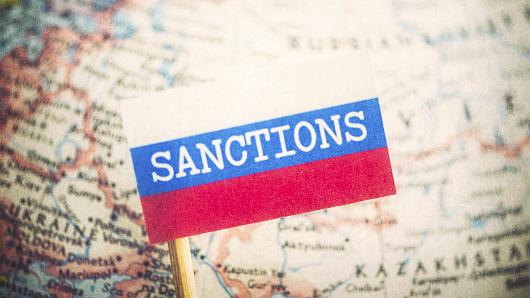At mid-year the Russian economy may be going up—or down. In what amounts to an ongoing ritual, in a June 17 interview President Putin sounded positive about the direction of the Russian economy. He is quoted as saying, “we expected a slight economic decline by the end of this year, but now we are seeing growth,” although he noted that investment continued to decline because of structural problems, sanctions, and low oil prices. It was not clear however if he was speaking about the economy overall or areas in which it has done well. Russian economic policymakers in the latest Russia IMF Article IV 2016 released on July 13 expect the economy to decline by -0.2 percent in 2016 and the IMF forecasts a decline of -1.2%.
The IMF notes that, after oil prices and geopolitical tensions, the banking sector remains a specific risk, although it remains stable. The IMF is less concerned about public sector finances. Although the government is running a substantial deficit, the IMF believes that measures taken already have proven effective, public debt, although growing, is low, and, if need be, the National Welfare Fund “with liquid assets worth 5% of GDP” could be used to cover the deficit. The IMF notes the government’s plans to manage the budget deficit through drawing down the Reserve Fund and from “privatization receipts from a number of large state-owned companies.”
IMF reference to the National Welfare Fund arises because the Reserve Fund is projected to decline to about $15b at the end of 2016 and to run dry in 2017. The government was running through the Reserve Fund at about $6-9b a month early in 2016, so even if the burn rate is lower now, $15b could disappear quickly.
The Welfare Fund, which was meant to cover pensions, not to provide budget support, is said to hold about $73b and the government expects to use $12b in 2017. However, the Welfare Fund is exposed to considerable financial risk because its assets consist of investments in public and private corporations whose financial health is in question. It has for instance a large exposure to VEB, Russia’s development bank, which is widely reported to be virtually bankrupt.
The Russian government recently tested the market for privatizations with the sale of part of its stake in diamond miner Alrosa PJSC, which sold at a 3.8% discount to its market value. Similar results for sales of other assets may reduce the government’s income from privatization, as well as reduce the value of what it continues to hold. The IMF itself cautioned that “Staff also recommended preserving more of the RF [Reserve Fund] as liquidity risks could materialize (e.g. drop in oil prices, low privatization receipts, and/or a tightening of sanctions)…”
Meanwhile, the IMF has warned that the Russian financial system will require additional recapitalization. According to the IMF, non-performing loans “might be higher than reported by some 3.5 percentage points resulting in a capital shortfall of about 0.5-1 percent of GDP. Under stress scenarios, the shortfall could reach up to about 4½ percent of GDP” (roughly equivalent to the size of the Welfare Fund). Central bank governor Elvira Nabiullina, is said to be looking into creating a troubled assets fund, putting a further strain on government finances. In addition, the IMF notes, “Support to the loss-making Russian Development Bank (VEB)…could reach up to 2 percent of GDP over the next few years.”
Ultimately, it plans to balance the budget through reforms that include “pension reform, means-testing social benefits, postponing investment and improving capital budgeting, cutting subsidies, and improving tax collection.” Many of these measures make sense, such as raising the pension age and focusing social benefits, but these measures mean greater pressure on incomes. Postponing investment will also weaken growth.
In fact, with all the uncertainty regarding the return to growth and the pace and scope of reforms due to upcoming elections, further pressure on livelihoods is the only certainty. The IMF refers to livelihoods only obliquely, mentioning in passing the government’s “tight income policies” and a fall in real wages that led to “a rebalancing of national income in favor of corporate profits”. The impact on livelihoods, however, will greatly influence the return to economic growth, because the renewal of even very modest growth next year is based on the expectation of an increase in demand.
A World Bank report expects the poverty rate (people living at or below the subsistence level of US$139/month) to reach over 13 percent of the population in 2016. The World Bank believes that “even the improvement in economic conditions projected in the baseline scenario would be unlikely to stop the erosion of household incomes in 2017.” The poverty rate could peak at 15.2 percent in 2017 before declining in 2018 if economic growth returns. Pressure on incomes will continue due to the government’s intention to freeze government spending for the next three years, cut social spending, not to fully index pensions and public sector salaries, and raise the pension age.
Of interest also may be that, a step below the oligarch class, Russia’s economic upper class (with incomes of 15 to 100m rubles), where private investment and discretionary spending might come from, is reported to have lost between 25 to 75 percent of its income in 2015 (Moscow Times).
Sixty percent of these are business owners who as a group lost 50 percent of their income, undercutting small to medium-size business investment. It is interesting to note that 84 percent of the economic upper class live in Moscow and thus might be expected to have a significant influence on government policy, which, economically, might be all for the good if it brings policy closer in line with the economic reality of everyday Russians.








